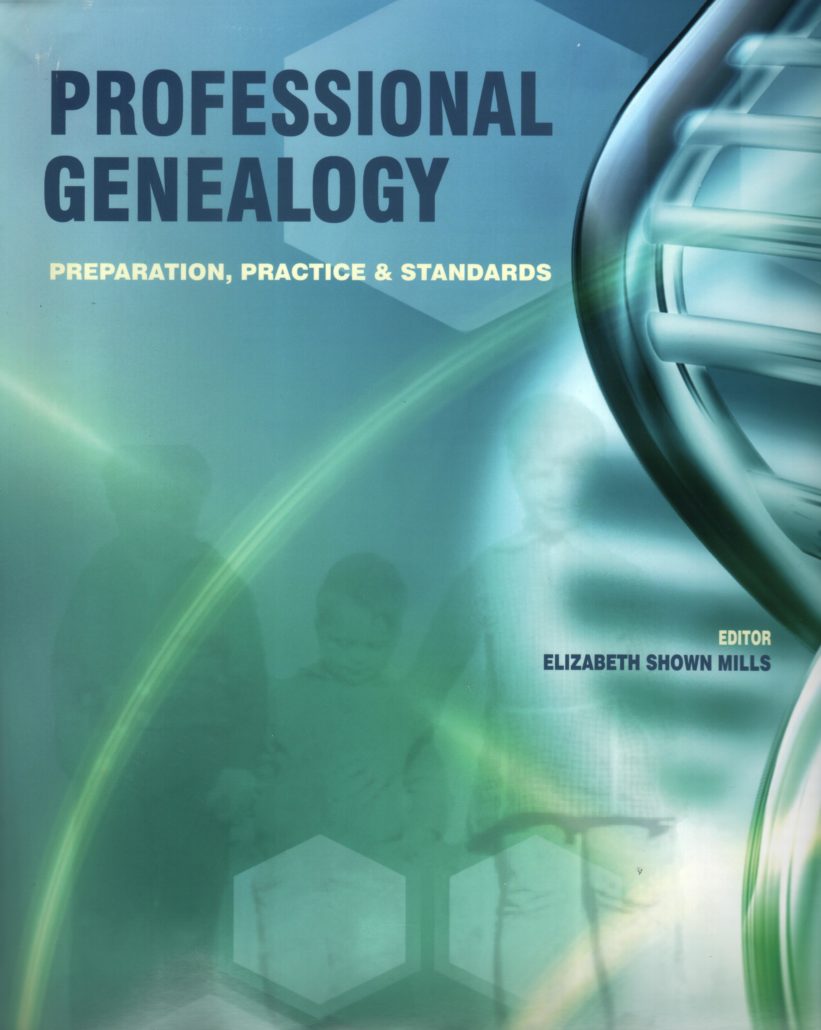
Elizabeth Shown Mills, editor of the reference work, Professional Genealogy: Preparation, Practice & Standards (Progen PPS), recently chose and edited a number of selections from Progen PPS for publication in “Genealogy Pointers.” We hasten to stress that while the author of each selection is a professional genealogist, each selection should interest anyone who is serious about genealogy. The following excerpt from Progen PPS is by Judy G. Russell (“The Legal Genealogist”) and covers the fundamentals of copyright.
“Genealogists, perhaps more so than researchers in any other field, need to understand the scope and limits of copyright law. Our day-to-day activities immerse us in the murky waters of this difficult area of the law. As both users and creators of copyrighted materials, we risk unforeseen complications or, worse, drowning in a sea of litigation expense if we fail to master the basics of copyright as it affects the field of genealogy.
“Copyright is the legal recognition of original creative works of authorship through the grant of exclusive rights for a specified time period. These exclusive rights include the right to
- reproduce the copyrighted work;
- prepare derivative works based on the copyrighted work;
- distribute copies of the copyrighted work to the public by sale, transfer, rental, lease, or lending;
- perform the copyrighted work in public; and
- display the copyrighted work in public.
“These rights apply whether the work is published or unpublished. They apply to broad categories of works. From the genealogist’s viewpoint, these cover most of the research materials we might use or create—specifically
- articles and books;
- artwork, charts, maps, and photographs;
- lectures, handouts, and syllabus materials;
- recorded interviews and other sound recordings;
- research reports and other analytical works; and
- webinars, motion pictures, YouTube and cell-phone videos.
“Copyright protection is automatic. While it once was necessary to include a formal notice of copyright on a work and to register it with a national copyright office or agency, there are no longer any formal requirements of notice or registration. Copyright protection begins the moment the work is created.4
DURATION OF COPYRIGHT
“The duration of copyright protection has varied across time. Current law provides that copyright begins automatically the minute the work is created and, in most cases, lasts for the lifetime of the creator plus seventy years.
“As to materials published before the most recent revision of the copyright laws (effective 1978), many variables impact the duration of copyright. The rules have also differed between published and unpublished materials. Despite the complexity of copyright duration, two general rules can be applied with relative ease:
Published work, if registered or legally published in the U.S. before 1923: copyright has expired. These works are now in the public domain.
Unpublished work by a deceased author: copyright expires at the end of the seventieth year after the author’s death. An unpublished manuscript written by an author who died in 1960, for example, would enter the public domain on 1 January 2031.
OWNERSHIP OF COPYRIGHT
“In general, the copyright is owned by the creator of the work. When a work is created by multiple authors, all authors are co-owners of the copyright in the absence of an agreement stating otherwise. With periodicals or collected works, each contribution is treated separately. Copyright to the individual contribution vests with the author while the editor or publisher may claim a collective copyright. Or the parties themselves may reach an agreement to the contrary. A minor may claim copyright, though localized laws may control any business dealings involving the minor’s property.
“A copyright is generally considered to be personal property, controlled by the ordinary state laws governing ownership, inheritance, and transfer of personal property. It may be sold, given away, or transferred during the lifetime of the copyright holder. On the death of the copyright owner, the copyright passes under the terms of the owner’s will—either expressly or under the will’s residuary clause. If the owner left no will, inheritance will follow the intestacy statute that applies to the owner’s estate.
Excerpted from Judy G. Russell, “Copyright and Fair Use,” Elizabeth Shown Mills, ed.,
Professional Genealogy: Preparation, Practice & Standards (Baltimore: Genealogical Publishing Co., 2018), 149–72.





